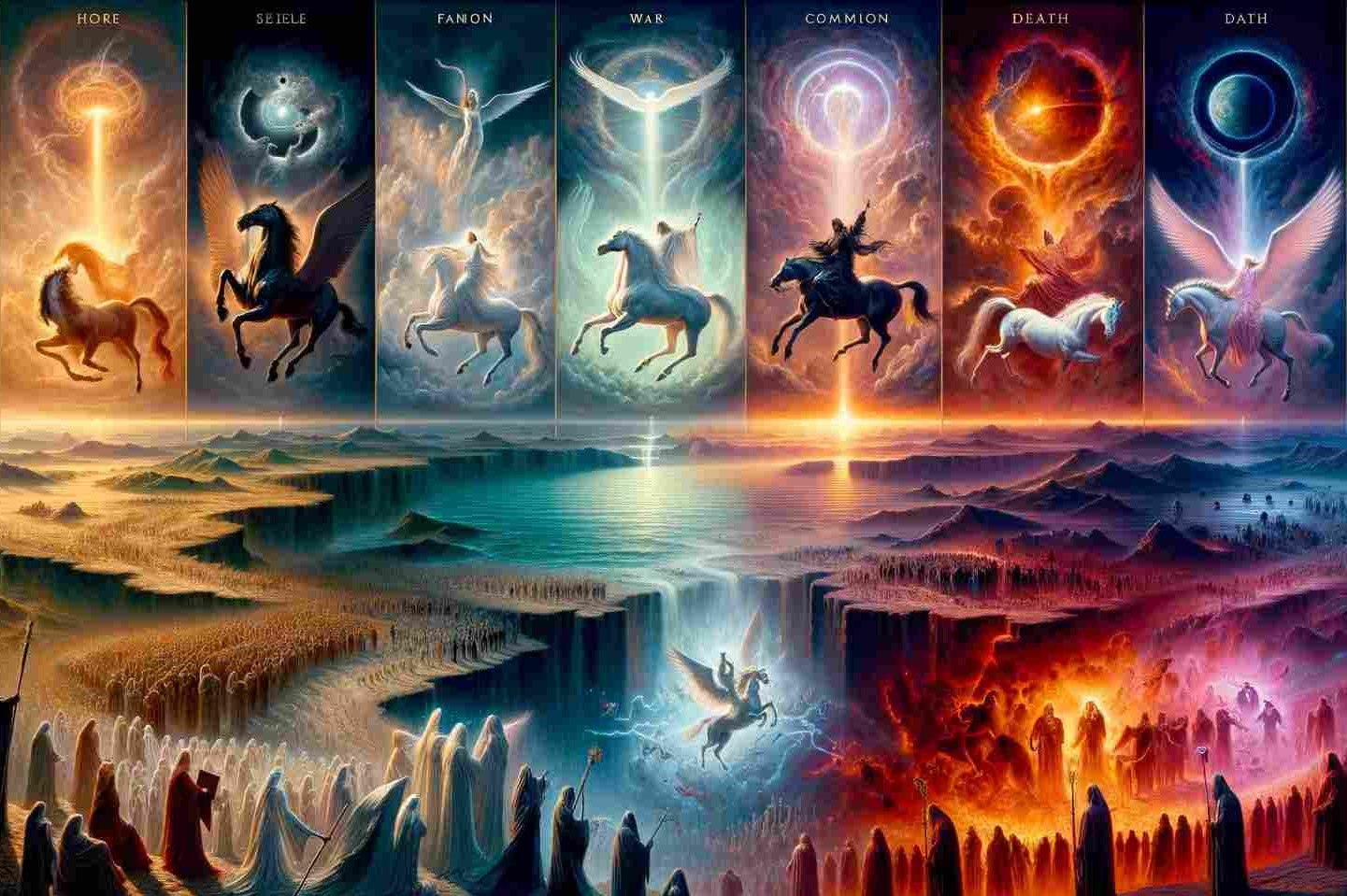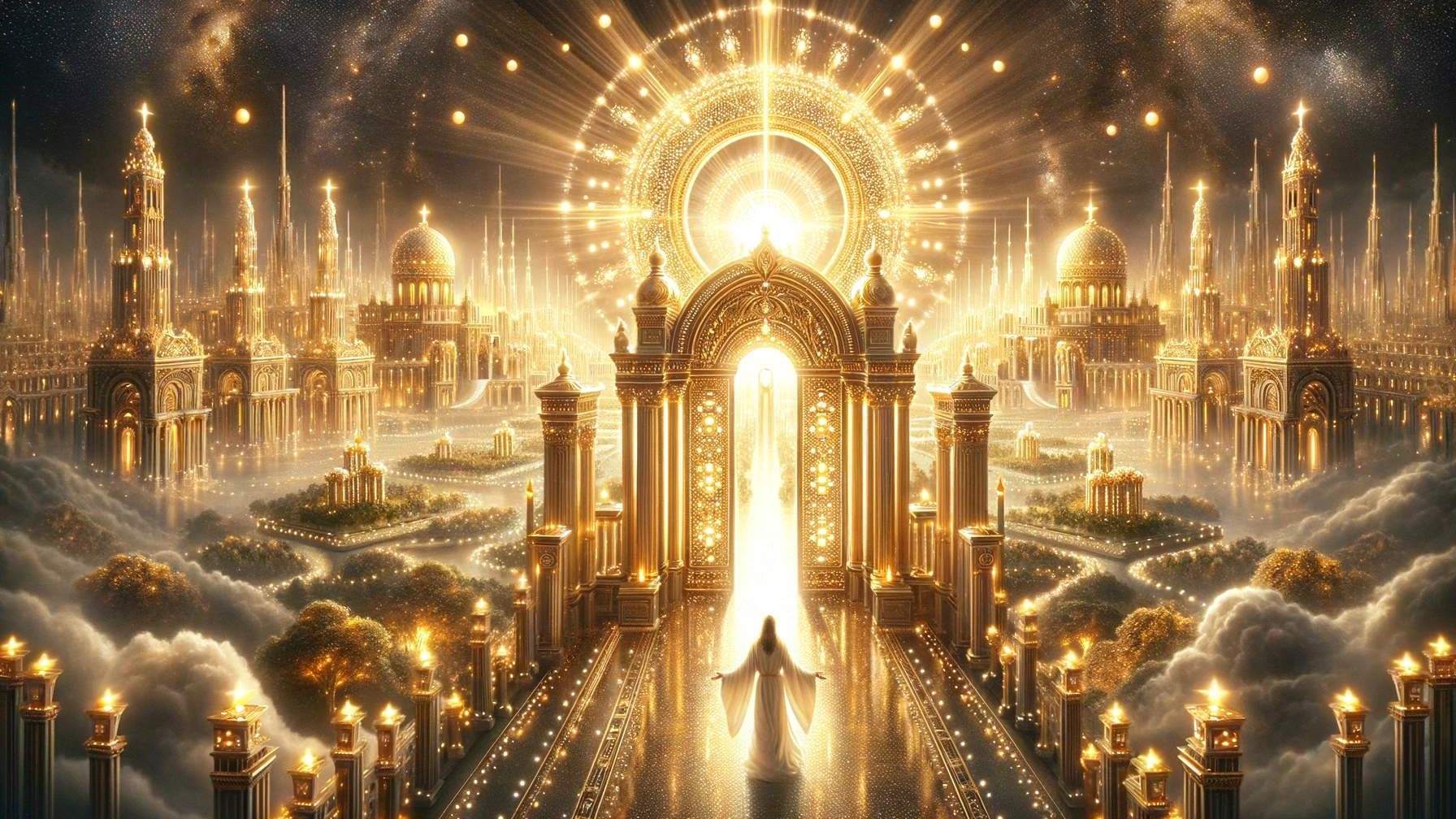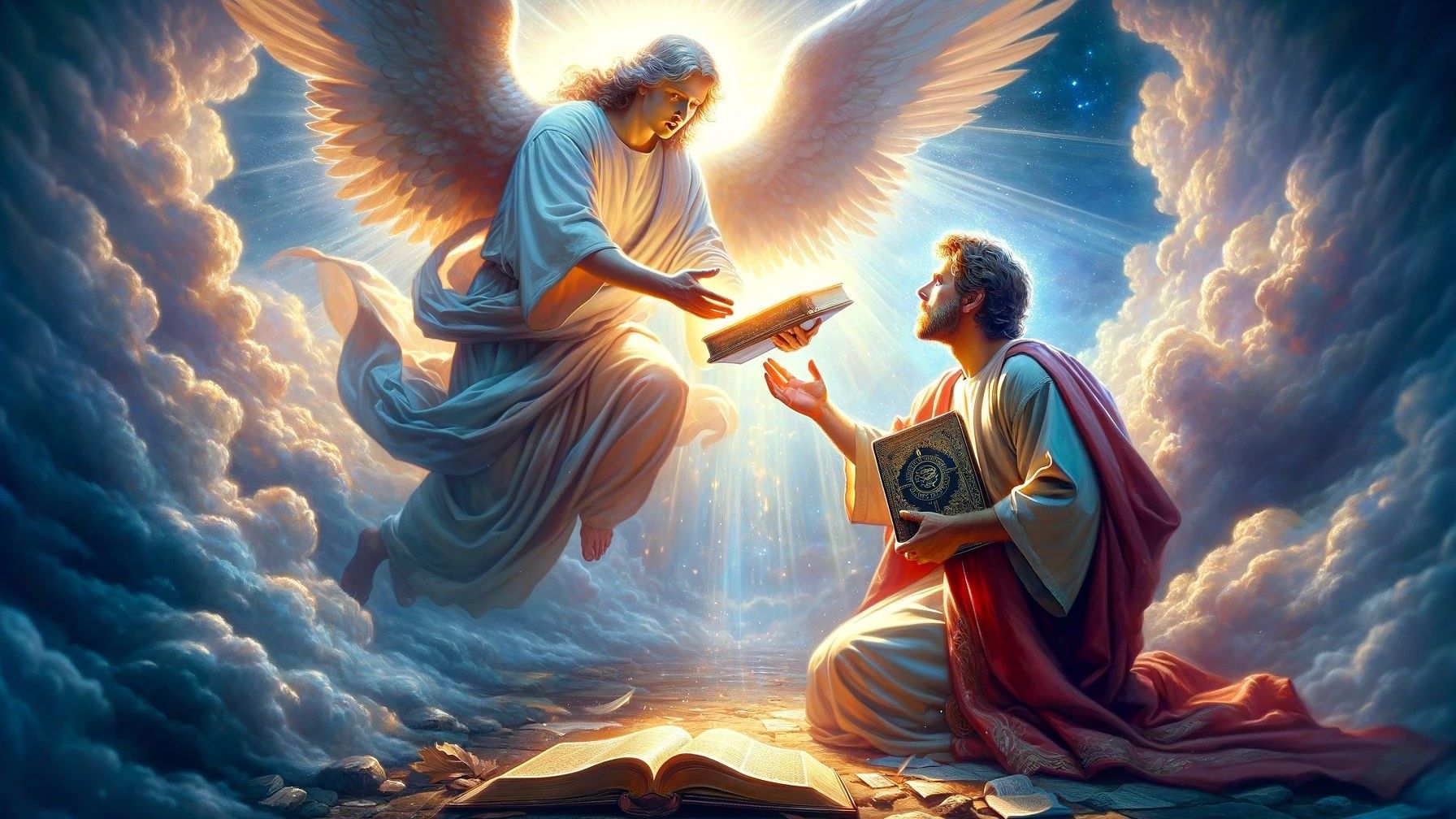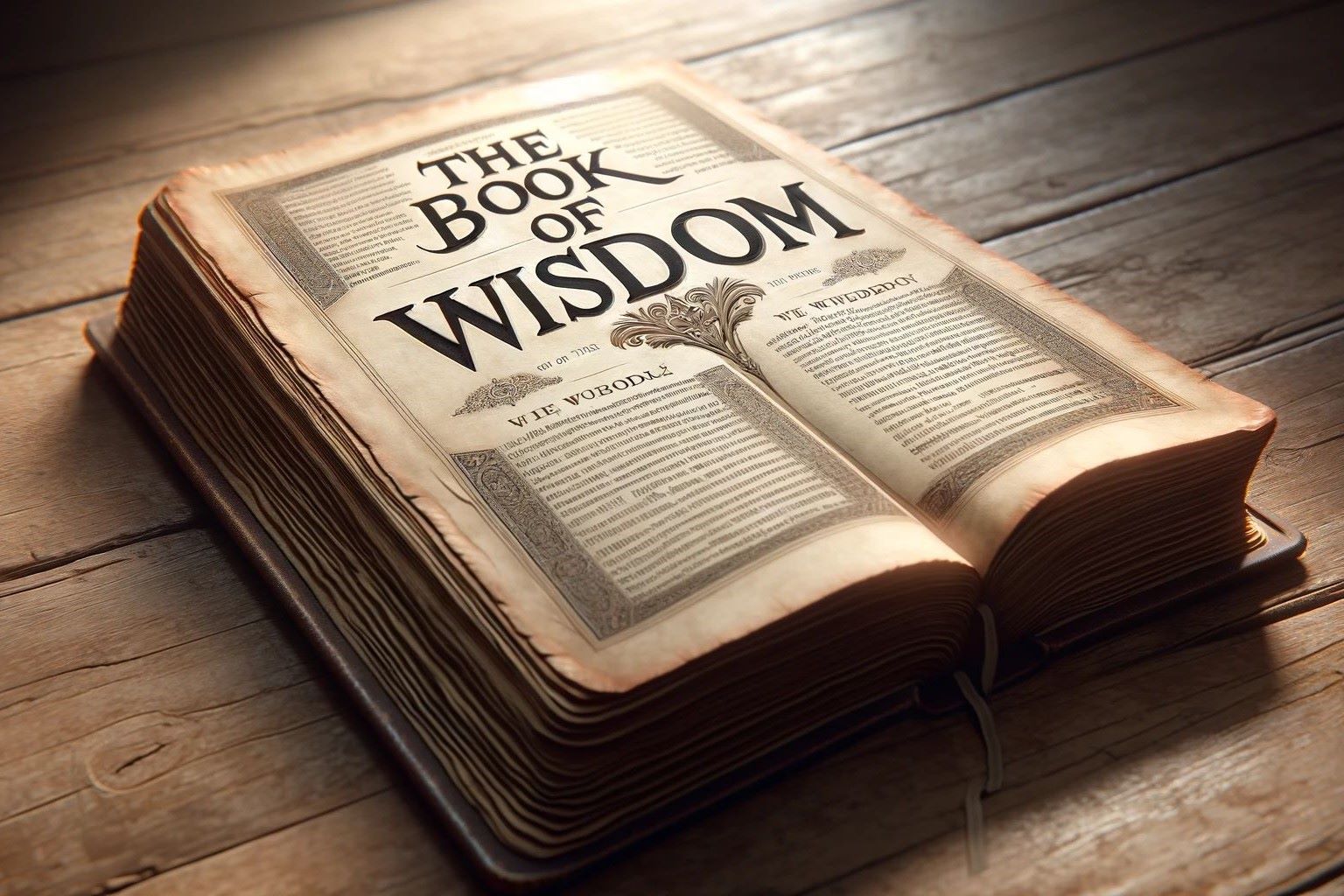Home>Bible Facts>In The Book Of Revelation, How Many Seals Are There


Bible Facts
In The Book Of Revelation, How Many Seals Are There
Published: February 11, 2024
Jason DeRose, Managing Editor at Christian.net, uses his expertise in religion and journalism to deepen understanding of faith's societal impacts. His editorial leadership, coupled with a strong academic background, enriches the platform’s diverse content, earning him recognition in both journalism and religious circles.
Discover the significance of the seven seals in the Book of Revelation and gain insights into biblical facts about this intriguing topic. Explore the meaning and symbolism behind the seven seals. Unlock the mysteries of the Bible with our comprehensive guide.
(Many of the links in this article redirect to a specific reviewed product. Your purchase of these products through affiliate links helps to generate commission for Christian.net, at no extra cost. Learn more)
Table of Contents
Introduction
The Book of Revelation, the final book of the New Testament, is a captivating and enigmatic piece of literature that has intrigued and inspired readers for centuries. It is a prophetic and symbolic work attributed to the apostle John, offering a glimpse into the apocalyptic visions he experienced on the island of Patmos. Among the various intriguing elements in this profound text, the concept of seals holds significant importance.
In the Book of Revelation, the use of seals carries deep symbolic meaning, representing divine authority, secrecy, and the unfolding of crucial events. These seals are depicted as being attached to a scroll, which only the worthy and authorized can open. The breaking of each seal reveals a new and profound aspect of the divine plan, unraveling a series of events that culminate in the ultimate triumph of good over evil.
The seven seals, in particular, are a focal point of the Book of Revelation, representing a sequence of cataclysmic events and divine judgments that will shape the course of history. Each seal, when opened, unleashes a specific vision or occurrence, serving as a testament to the power and sovereignty of God over the affairs of the world.
As we delve into the significance and implications of the seven seals in the Book of Revelation, it becomes evident that these symbols hold profound implications for humanity's understanding of eschatological events and the ultimate fulfillment of God's plan for the world. The interpretations and implications of these seals have sparked intense theological discussions and diverse perspectives, making them a subject of great interest and contemplation for scholars, theologians, and believers alike.
In the subsequent sections, we will explore the profound meaning of seals in the Book of Revelation, unravel the significance of the seven seals, and delve into the diverse interpretations that have emerged over the centuries. Through this exploration, we aim to gain a deeper understanding of the profound symbolism and theological significance embedded within the seven seals of the Book of Revelation.
Read more: How Many Chapters In Book Of Revelation
The Meaning of Seals in the Book of Revelation
The concept of seals in the Book of Revelation holds profound symbolic significance, serving as a powerful representation of divine authority, secrecy, and the unfolding of pivotal events in the grand narrative of eschatological prophecy. In the ancient world, seals were commonly used to authenticate documents, secure containers, and signify ownership or authority. In the context of the Book of Revelation, the imagery of seals is imbued with rich symbolism, signifying the divine authority and sovereignty of God over the unfolding of history and the ultimate fulfillment of His plan for humanity.
The use of seals in the Book of Revelation is closely tied to the imagery of a scroll, which is sealed with seven seals and contains the prophetic revelations that are to be unveiled. The sealed scroll represents the hidden knowledge and divine mysteries that are inaccessible to the uninitiated and can only be revealed through the authority and agency of God. As the Lamb, representing Jesus Christ, is found worthy to open the seals, the unfolding of each seal brings forth a new vision or event, unveiling the divine plan for the culmination of history.
Moreover, the act of breaking the seals signifies the initiation of significant events and judgments that will shape the course of human history, leading towards the ultimate establishment of God's kingdom. Each seal, when opened, reveals a specific aspect of God's plan, ranging from conquest and war to famine and cosmic disturbances, portraying the unfolding of divine justice and the ultimate triumph of righteousness over evil.
Furthermore, the symbolism of seals in the Book of Revelation underscores the idea of divine ownership and protection, as seen in the imagery of the sealed servants of God who are marked and preserved amidst the impending tribulations. The seals serve as a testament to the divine protection and ultimate vindication of the faithful, highlighting the assurance of God's sovereignty and care for His people in the midst of tumultuous events.
In essence, the meaning of seals in the Book of Revelation transcends mere physical imagery, delving into the profound theological and eschatological implications of divine authority, judgment, protection, and the ultimate fulfillment of God's redemptive plan for humanity. The symbolism of seals serves as a powerful reminder of the overarching sovereignty and providential guidance of God, shaping the unfolding events that lead towards the consummation of all things in accordance with His divine purpose.
The Seven Seals in the Book of Revelation
The Book of Revelation introduces the concept of the seven seals as a pivotal element in the unfolding of eschatological events and divine judgments. These seals, depicted as being attached to a scroll in the right hand of God, represent a sequence of cataclysmic occurrences and profound visions that shape the course of human history and the ultimate establishment of God's kingdom. As the Lamb, symbolizing Jesus Christ, is found worthy to open the seals, a series of dramatic events and visions are unleashed, each bearing significant implications for the culmination of God's redemptive plan.
The opening of the first four seals reveals the Four Horsemen of the Apocalypse, each representing a specific aspect of divine judgment and the tumultuous events that will befall the earth. The first horseman, riding a white horse, symbolizes conquest and the spread of false peace. The second, on a red horse, signifies war and bloodshed. The third, on a black horse, represents famine and scarcity, while the fourth, on a pale horse, embodies death and Hades, signifying the devastating consequences of the preceding calamities.
The opening of the fifth seal unveils the vision of the martyrs under the altar, crying out for justice and vindication. This poignant imagery underscores the suffering and persecution endured by the faithful, highlighting the ultimate triumph and vindication awaiting those who remain steadfast in their faith.
The sixth seal brings forth cosmic disturbances and cataclysmic events, portraying the upheaval of the natural order and the awe-inspiring manifestations signaling the impending arrival of divine judgment and the Day of the Lord.
Finally, the opening of the seventh seal heralds a profound silence in heaven, signifying the anticipation of the impending judgments and the culmination of God's redemptive plan. This silence sets the stage for the subsequent series of trumpet judgments, further unraveling the unfolding of divine justice and the ultimate consummation of all things.
The symbolism and significance of the seven seals in the Book of Revelation are profound, encapsulating the divine sovereignty, the unfolding of eschatological events, and the ultimate triumph of God's redemptive purpose. These seals serve as a testament to the overarching authority and providential guidance of God, shaping the course of history and leading towards the fulfillment of His redemptive plan for humanity.
Interpretations of the Seven Seals
The interpretations of the seven seals in the Book of Revelation have sparked diverse perspectives and theological discussions throughout history, leading to a rich tapestry of interpretations and understandings. These interpretations offer profound insights into the eschatological significance of the seals and their implications for the ultimate fulfillment of God's redemptive plan.
-
Historical Interpretation: Some scholars and theologians interpret the events unveiled by the seven seals as symbolic representations of significant historical occurrences, spanning from the early Christian era to the culmination of human history. The Four Horsemen, for instance, are seen as emblematic of conquest, war, famine, and death, reflecting the tumultuous events that have shaped the course of civilizations over time.
-
Prophetic Interpretation: Another perspective revolves around the prophetic nature of the seven seals, viewing them as foretelling the sequence of events leading to the end times and the establishment of God's kingdom. Each seal is seen as a prelude to the subsequent judgments and divine interventions, culminating in the ultimate triumph of righteousness and the restoration of all things.
-
Symbolic Interpretation: The symbolic interpretation of the seven seals emphasizes the spiritual and allegorical significance of the visions unveiled. The Four Horsemen, for example, are interpreted as representing spiritual forces and societal upheavals, while the cosmic disturbances under the sixth seal are viewed as emblematic of the cosmic significance of divine intervention in human affairs.
-
Futurist Interpretation: Some interpretations adopt a futurist perspective, viewing the events depicted under the seven seals as yet to unfold in the future, signaling the impending eschatological events that will precede the return of Christ and the establishment of His kingdom. This perspective underscores the anticipation of the fulfillment of these prophetic visions in the unfolding of future events.
-
Spiritual Application: Beyond the historical and prophetic dimensions, the interpretations of the seven seals often extend to their spiritual application in the lives of believers. The trials and tribulations symbolized by the seals are seen as emblematic of the spiritual challenges faced by individuals and communities, highlighting the enduring relevance of these visions in the lives of believers.
In essence, the interpretations of the seven seals in the Book of Revelation encompass a spectrum of perspectives, ranging from historical and prophetic understandings to symbolic and spiritual applications. These diverse interpretations contribute to a multifaceted understanding of the profound symbolism and theological significance embedded within the seven seals, offering profound insights into the unfolding of divine providence and the ultimate fulfillment of God's redemptive plan for humanity.
Conclusion
The exploration of the seven seals in the Book of Revelation unveils a tapestry of profound symbolism, theological significance, and eschatological implications that have captivated the minds and hearts of readers for centuries. These seals, representing divine authority, secrecy, and the unfolding of pivotal events, serve as a testament to the overarching sovereignty and providential guidance of God over the affairs of the world. As the Lamb, symbolizing Jesus Christ, is found worthy to open the seals, a sequence of cataclysmic events and profound visions is unleashed, each bearing significant implications for the culmination of God's redemptive plan.
The interpretations of the seven seals encompass a spectrum of perspectives, ranging from historical and prophetic understandings to symbolic and spiritual applications. These diverse interpretations contribute to a multifaceted understanding of the profound symbolism and theological significance embedded within the seven seals, offering profound insights into the unfolding of divine providence and the ultimate fulfillment of God's redemptive plan for humanity.
The imagery of seals in the Book of Revelation transcends mere physical symbolism, delving into the profound theological and eschatological implications of divine authority, judgment, protection, and the ultimate fulfillment of God's redemptive plan. The opening of each seal reveals a specific aspect of God's plan, ranging from conquest and war to famine and cosmic disturbances, portraying the unfolding of divine justice and the ultimate triumph of righteousness over evil.
In essence, the seven seals in the Book of Revelation serve as a powerful reminder of the overarching sovereignty and providential guidance of God, shaping the unfolding events that lead towards the consummation of all things in accordance with His divine purpose. The profound meaning of these seals extends beyond their historical and prophetic dimensions, resonating with spiritual significance and offering timeless insights into the enduring relevance of these visions in the lives of believers.
As readers continue to contemplate the profound symbolism and theological depth of the seven seals, they are invited to embark on a journey of contemplation and discovery, delving into the rich tapestry of interpretations and perspectives that illuminate the profound significance of these seals in the grand narrative of eschatological prophecy. The exploration of the seven seals in the Book of Revelation stands as a testament to the enduring power of biblical symbolism and its capacity to inspire, challenge, and illuminate the hearts and minds of those who seek to unravel its profound mysteries.















